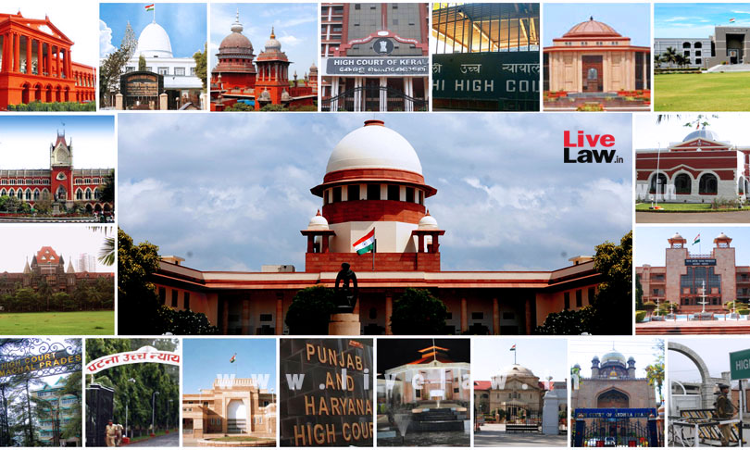Open Data For Justice
Prashant Reddy T. & Tarika Jain
11 Dec 2019 2:08 PM IST

Over the last few years, the judiciary has come under increasing criticism for its lack of transparency. In the courtroom, sealed covers are being used to shield crucial evidence from public scrutiny, while on the administrative side a range of tactics are used to escape probing questions posed by citizens under the RTI Act. Much of this judicial resistance to transparency goes against the long judicial tradition of open courts as well as the judicial pronouncements on the right to information being a fundamental right under Article 19(1)(a). This resistance to transparency extends to the mountains of digital data being accumulated by judicial data systems such as the ambitious e-courts system. Since the judiciary is reluctant to share the mountains of data accumulated through the e-courts systems it is becoming impossible for academics or innovators to sift through the data to contribute solutions to the many issues affecting the judicial system.
On the hand, the Government of India seems to have recognized the value of gathering meaningful data and publishing it so that the private sector may harness it for future use. It announced the National Data Sharing and Accessibility Policy (NDSAP) in 2012 which focuses on bringing government data in public domain. The policy is founded in the duty of public institutions to publicly disclose information under Section 4 of the RTI Act, 2005, and acknowledges that access to data leads to public good and benefits civil society. Similarly, the Economic Survey of 2019 emphasised on the need for creating a consolidated database of government data 'of the people, by the people, for the people,' effectively touting open data as the cornerstone of modern democracy. The judiciary unfortunately lacks such a policy to share its data.
In our report titled 'Open Courts in the Digital Age' we explain how access to justice and the rule of law can be significantly strengthened by the courts adopting an 'Open Data' policy for all judicial data. Such a policy would require the judiciary to design its digital systems in a manner that allows for the data generated by the system to be in a machine-readable format that can be reused and reshared by others. A simple illustration of how open data practices can transform access to legal information and innovation is the website Indiankanoon.org which provides a free, searchable database of all judgments across all High Courts and the Supreme Court. It was possible only because the higher judiciary made it an early practice to make available their judgments in a machine-readable PDF format unlike the Government which even now very often makes its documents available in an image format. Once the judgments were available in a machine-readable format, it took just one man, Sushant Sinha, an IITian and the founder of Indiankanoon.org to write the algorithms that made it possible to collate all the judgements into one single database that was searchable thereby revolutionising free legal research for scores of lawyers who were otherwise dependent on expensive databases. There is room for several more products to be created if the judiciary were to adopt better open data practices.
Another benefit of good open data practises, is that it makes information more accessible to the print disabled who can access such data through screen reading technologies. A lot remains to be done to make judicial data more easily accessible. For example, although the National Informatics Centre (NIC) has developed an Application Programming Interface (API) interface for the e-courts system, to facilitate easy sharing of data in the e-courts system, it is not shared with anyone but government, despite all Indian citizens having a fundamental right to access such information. There are other issues such as Indian language fonts, common standards, mark-up languages and copyright issues that need to be tackled in a potential 'Open Data' policy.
The most concerning issue with open data policies, is usually the issue of privacy of citizens. This is less of a concern in the context of the judiciary because the tradition of 'open courts', which has required judges to conduct court in full public glare so as to preclude possible unfair conduct, has also meant that there has rarely ever been a right to privacy in the courtroom. Since the decision in the Puttaswamy judgement, it has become necessary to harmonize the fundamental right to information with the fundamental right to privacy. The law already does recognise certain exceptions to the open courts principles in cases of sexual offences, juvenile justice and matrimonial matters. Only in these cases where the right to privacy outweighs the right to know should a court be allowed to grant protection to the parties and resort to sealed covers or anonymization of details. The discretion of the judge necessarily has to be confined to these limits. In this regard, anonymization of sensitive personal information should ideally be done ex-ante by the judge once the party seeking such protection successfully establishes the harm that will be caused to it without the protection.
Now, more than ever, it is imperative that the judiciary accelerates its efforts to reach out to the people and open its doors for imaginative solutions to restore the faith of the people in its efficacy. Adopting an open data policy would be the necessary next step in this regard.
Views Are Personal Only.
(The writers work on judicial reforms at the Vidhi Centre for Legal Policy)
[Read Report]


